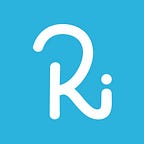Making a Board Game from Scratch.
Geo Archipelago is a climate crisis board game I designed as part of my final dissertation project. Almost every component of the board game was made by hand, this was an interesting project due to the UK going into lockdown mid-way through the project.
Part of my dissertation consisted of looking at climate engineering and the idea of manipulation of the climate to revert the impacts of global warming, this is known as geoengineering. Geoengineering became the basis of what my board game was based on.
Game Objective
Before I talk about the process of designing and making this boardgame I should probably explain what Geo Archipelago is. Geo Archipelago is a mystery game based in a future where the current ongoing climate crisis has gotten out of control.
In this utopia 10 islands exist, these islands work in harmony with a series of geoengineering systems in place to keep global warming under control these lands are called Archipelago.
When one of the geoengineering systems fail it is the player's task to not only find out which system has failed but also who is able to fix it, just like real life once a geoengineering system is put in place it has to run constantly if a system stops the earth will start warming up again.
In order to find the answers required each player takes it in turns to go to each island and ask questions.
Research and Initial sketching
I already had an idea in my head of having a set of small islands that players can jump around (an archipelago)
Some of the islands were based on real islands from around the world, however, I thought it would be fun to have a few easter eggs in there. Once I was happy I digitalized them using Procreate.
The board design itself took a lot of work feedback was key to ensure the design looked engaging to the target audience. I wanted to try a futuristic geometric design to fit the future utopia however after getting feedback from a few board game forums and my peers it was clear a traditional map style design looked more engaging.
In the game, there are 6 different geoengineering systems cards. It was important to make each car look interesting and not too boring.
To keep the designs interesting I had to get creative with not only the illustrations but the names too, for example, stratospheric aerosols was renamed to space deodorant.
Initially, I chose a simple cartoon type-based logo was chosen however this did not fit in with the board design.
Going back to the drawing board I decided to look at existing board game branding, this inspired me to create a logo that looked a lot more 3 dimensional. The 3D Design looked a lot more eye-catching.
The Making
This was definitely the most exciting part of the project however the most stressful. Once the design process was finished it was early March 2020 and I came into the realisation that the UK could go into lockdown in the upcoming weeks, this meant that I had to plan exactly what I could make at home and what I needed to use my universities facilities the main two being large format printing and CNC Laser cutting.
Fortunately, the day after I printed my board game design the UK went into lockdown shutting down my university.
Making the playing cards and board design
The board and cards were printed on A3 and A1 paper respectively and then a clear lacquer was sprayed to protect the print whilst providing a smooth glossy finish. This was based on an amazing tutorial I found about creating professional playing cards at home by YouTuber, Dining Table Print & Play.
Making the counters
Initially inspired by Monopoly I wanted to create metal objects based on each system for the counters, however, due to a mix of my own technical limitations and time, I decided to use acrylic and a CNC laser cutter.
My engineering and product design background allowed me to quickly mockup several designs using 3D CAD software. In the end, a simple two-piece design was used.
The counters were easily assembled with friction fit being more than adequate. Due to the counters being so small I was able to use sample sheets of acrylic which made the counters considerably cheaper.
To make the board itself I decided to cover 3mm Greyboard in book cloth this gave me a premium feeling board backing to which I could apply my board game print onto. By leaving a gap between two of the boards and cutting a slit in one-quarter the whole board was able to fold into itself just like a professional board.
Unfortunately due to UK Lockdown, I was unable to access the facilities to print and make the board game box and the tray, Initially, I had planned to vacuum forum the tray.
Instead, I ended up producing 3D mockups using Cinema 4D.
The Final Product
Overall this is one of my favourite projects, There is a whole digital side to this project that took the form of NFC Chips embedded into the playing cards and a complimentary app that allows additional game modes. I plan to do a writeup of this digital side of the game in the future.
Thanks for reading.
If you would like to see more of my work check out my website rahulislam.co.uk
I am also on Instagram, Behance and a whole lot more
